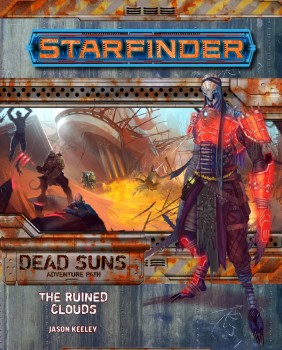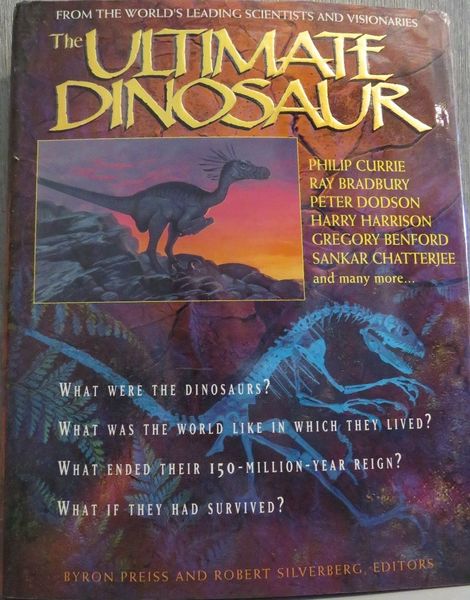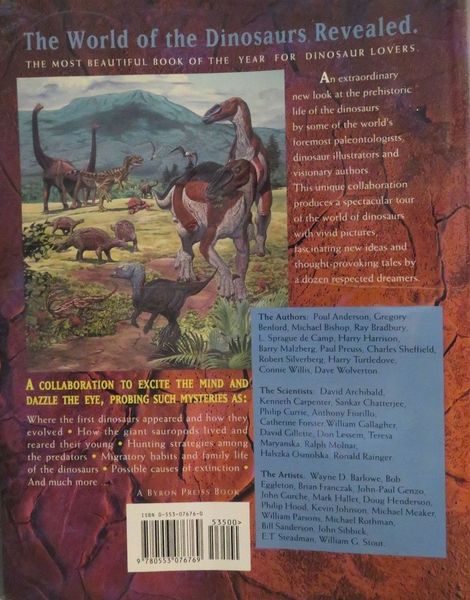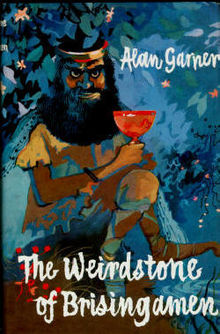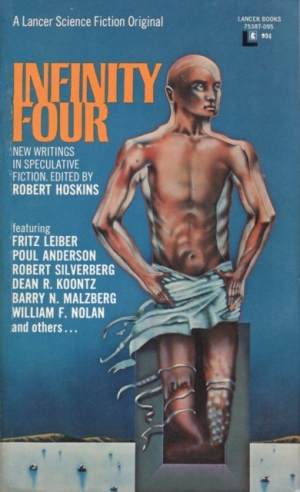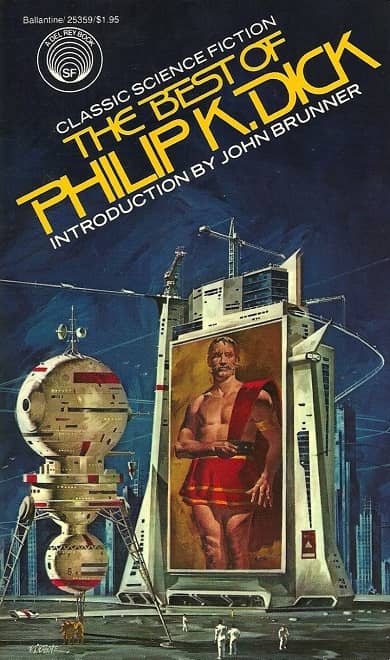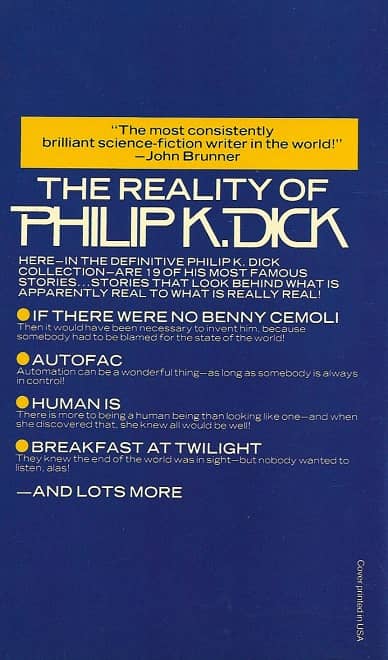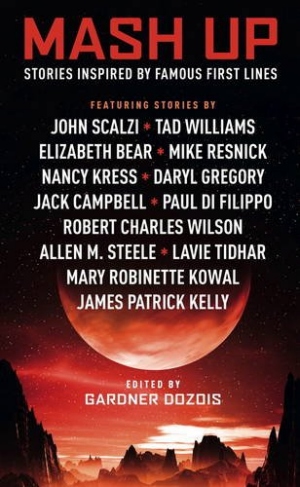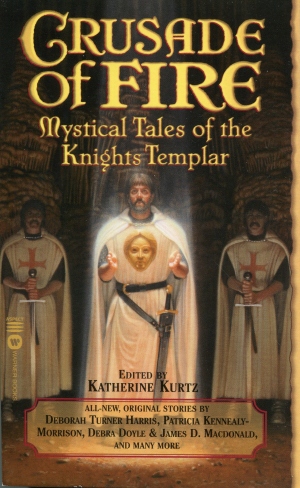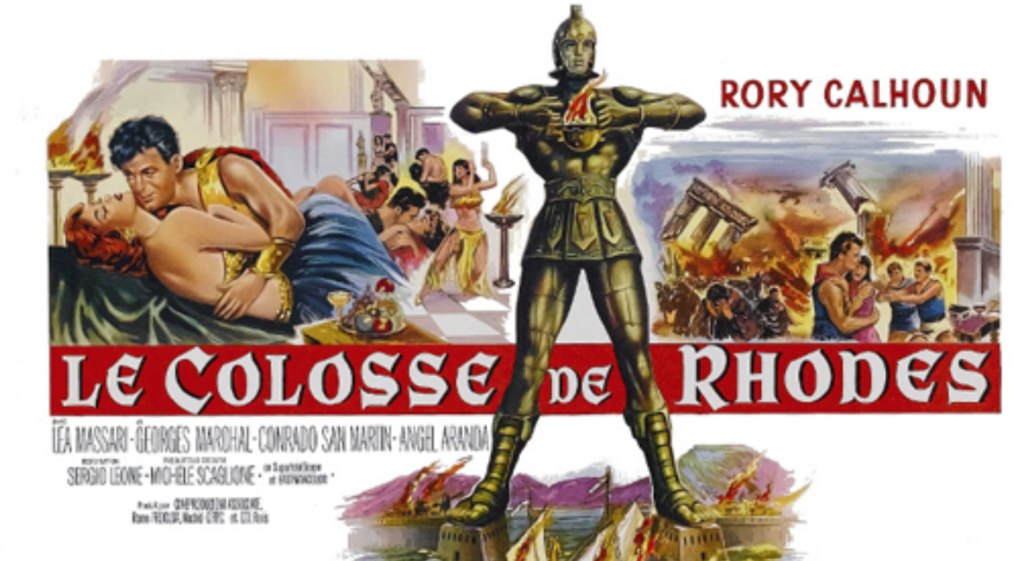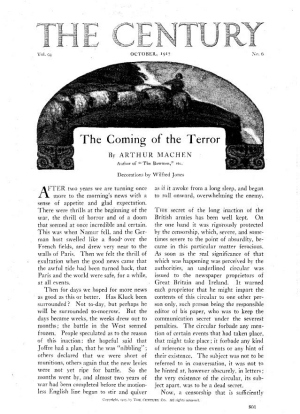The Origin Stories of Tempus, Niko and the Sacred Band: Tempus With His Right-Side Companion Niko, by Janet Morris
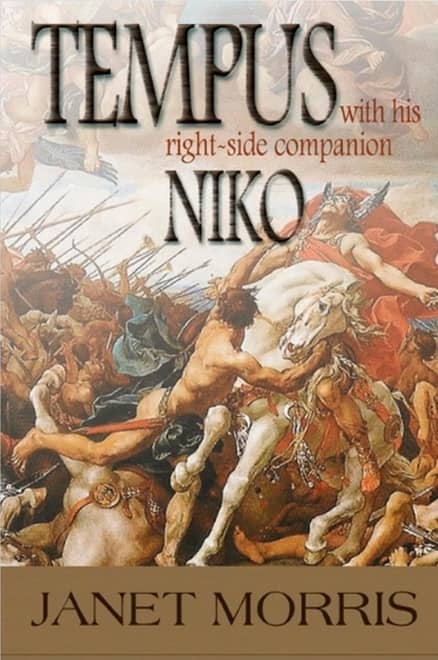 |
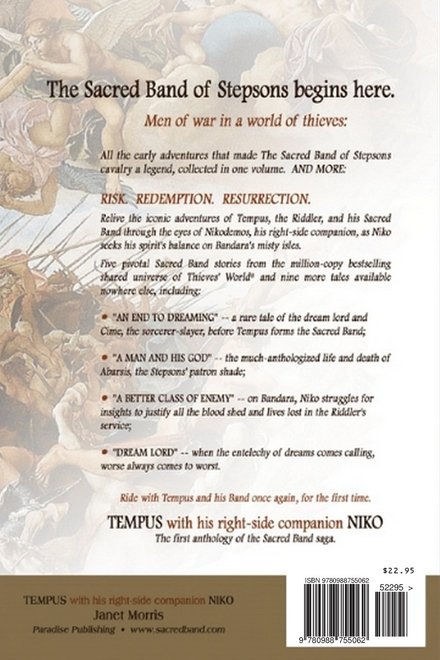 |
Relive the iconic adventures of Tempus the Black and his Sacred Band through the eyes of Nikodemos, his right-side companion, as Niko seeks his spirit’s balance on Bandara’s misty isles. Five early tales of the Stepsons in a world of thieves, novelized with additional stories available nowhere else. Ride with Tempus and his Sacred Band once again, or for the first time. PUBLISHER’S NOTE: Parts of this work have been published in substantially similar form in several volumes of the Shared Universe Series, Thieves World.
This book contains the original stories first written about the Sacred Band of Stepsons, as well as some new stories that expand on their adventures, and Niko’s quest to regain his spiritual and mystical balance. Meet the characters who made the Sacred Band famous: Abarsis, the Slaughter Priest Abarsis, who first formed the Sacred Band and from whom Tempus took over the Band; Niko, Critias, Straton, hazard-class and allergy prone mage Randal “Witchy Ears.” Meet Roxane the witch and her death squads, Ischade the Necromant and her cadre of undead servants, and Cime, Tempus’ wizard-slaying sister. Witness the might of the storm god Vashanka and his immortal god-ridden avatar, Tempus as they battle against sorcery, betrayal and corruption, alongside his Sacred Band of Stepsons. Meet legendary immortals Askelon, the Dream Lord of Meridian, and Jihan the Froth Daughter of Lord Storm.
